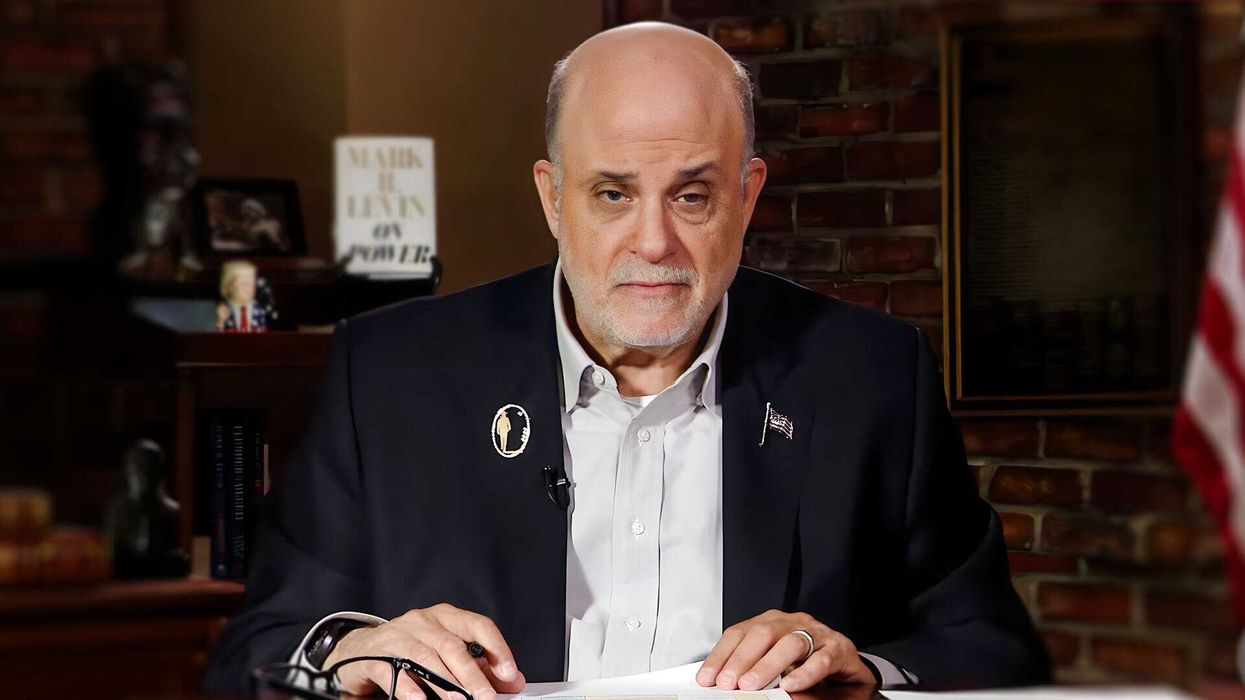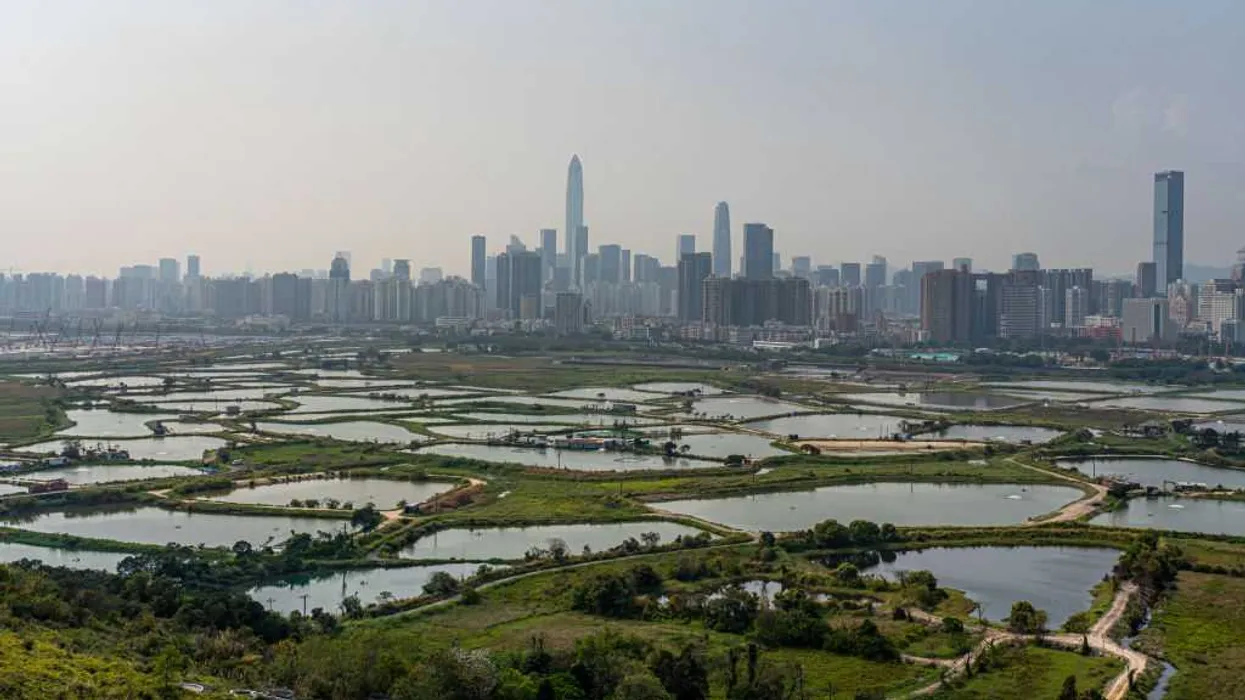
Day: November 12, 2025
65ac9609-07db-53ac-b7e3-7fe71423ee43 fnc Fox News fox-news/sports/nba/boston-celtics fox-news/sports/nba/philadelphia-76ers
76ers player’s mom playfully scolds son for emphatic outburst after big shot
The mother of Philadelphia 76ers forward Justin Edwards said her son was going to catch a “beating” for cursing after a big shot in the win over the Boston Celtics.
3145b1d9-e987-5c8f-99b3-80f774085982 fnc Fox News fox-news/topic/venezuelan-political-crisis fox-news/world/world-regions/china
China moves into Venezuela as Maduro regime gets Beijing lifeline amid US tensions
Trump’s zero tolerance policy clashes with China’s new tariff-free trade deal with Venezuela, escalating tensions as U.S. carrier group monitors the region.
CNN host says she studies ‘conspiracy theories’ to effectively talk with conservatives
Abby Phillip tells Joy Reid that half her job involves knowing conspiracy theories to communicate with supporters of President Donald Trump who believe false information.
021e0af1-714a-509c-8eb7-bae6139674ba fnc Fox News fox-news/columns/energy-in-america fox-news/energy
Trump admin announces big step toward ‘energy dominance’ with massive Alaska LNG project alliance
Glenfarne’s Alaska LNG project advances with BakerHughes alliance to build nearly 1,000-mile pipeline and terminal, creating energy infrastructure for U.S.
Dem Senate staffer accused of posing as lawyer in attempt to free illegal immigrant from ICE custody
ICE officials say Edward York from Sen. Tammy Duckworth’s office falsified documents and claimed to be a lawyer to gain access to a detained illegal immigrant.
8102b1c9-2295-5ff4-9b69-d10b862673ce fnc Fox News fox-news/person/jeffrey-epstein fox-news/us/congress
White House slams Dems’ ‘bad-faith’ Epstein doc release as demand for files intensifies
The White House fired back after correspondence from Jeffrey Epstein about President Donald Trump was released by House Democrats on Wednesday
#2410 – Jeff Dye
Jeff Dye is a comic, actor, broadcast personality, and host of the podcast “Dye Hard with Jeff Dye.” His latest special, “The Last Cowboy in LA,” is available to stream on YouTube.
www.jeffdye.com
www.youtube.com/@JeffDye
https://youtu.be/lwRz8rvGizI?si=t2W7x_0-PKkV6QZb
Perplexity: Download the app or ask Perplexity anything at https://pplx.ai/rogan.
Buy 1 Get 1 Free Trucker Hat with code ROGAN at https://happydad.com
This video is sponsored by BetterHelp. Visit https://BetterHelp.com/JRE
Learn more about your ad choices. Visit podcastchoices.com/adchoices
Angry America
Currently, I don’t enjoy following politics. I have to – nature of writing for this space, but it is not much fun. Our issues are animated by our hatreds and opposition, not by visions of good, better, best. I remain conservative, but I no longer feel like I am building a better America, instead I feel like I am on a rescue mission, just trying to keep the nation’s collective head above water. Each move ends up crashing on the rocks of some juvenile leftist stunt and each time it happens some conservatives either walk away frustrated or just start yelling and stunting themselves, thinking such is a counter-measure.
The post Angry America appeared first on The Hugh Hewitt Show.
Mark Levin: Qatar funds terror, shelter killers — now America’s ‘best friend’?

While Mark Levin is one of President Trump’s most vocal supporters, he is concerned about America’s fraternizing with Qatar — a country pitched as “one of the great leaders of the Middle East and the world.”
“I say no, Qatar is a very dangerous country,” says Levin.
He reminds us that in 2002, Wall Street Journal reporter Daniel Pearl was brutally beheaded by Khalid Sheikh Mohammed, al-Qaeda’s chief of operations and the architect of 9/11. It was Qatar who sheltered KSM from the FBI — specifically the father of the country’s current ruler, Sheikh Tamim bin Hamad Al Thani.
Further, these same Qatari family members, Levin says, “are the sugar daddies for Hamas” — funding the terrorist organization for years, hosting its leaders, and acting as its political lifeline.
That hasn’t changed. Even though Qatar has been a key broker alongside the U.S. and Egypt in the tiered ceasefire deal between Hamas and Israel, it’s still on Team Hamas, Levin says.
Just last month, Sheikh Tamim delivered an address at the opening session of the 54th annual Shura Council.
He was clear about where Qatar’s loyalty lies: “Israel has violated all laws and norms governing relations between nations through its aggressive actions against the mediator and its attempt to assassinate members of a negotiating delegation. We consider this aggression to be state terrorism. And the global response was so powerful that it shocked those responsible. What’s happened in the Gaza Strip in the past two years amounts to genocide — a term that encapsulates all atrocities. It is regrettable that they remain incapable of enforcing its respect when it comes to the tragedy of our brotherly Palestinian people.”
This is a load of lies, says Levin. “The Israelis weren’t trying to take out the negotiators. They were trying to take out the Hamas leaders that [Sheikh Tamim] was protecting.”
“[Qatar] is [America’s] new best friend,” he laments.
“They’ve gotten into the West,” into “all parties, every aspect of our culture, our educational system. … They are behind the Muslim Brotherhood, Islamic Jihad, Hamas. They supported the Taliban, and they support the destruction of our universities and colleges.”
For Levin, Qatar’s billions and diplomatic handshakes can’t erase its track record. America’s “new best friend” remains a Trojan horse for terrorism and anti-Western ideology.
Want more from Mark Levin?
To enjoy more of “the Great One” — Mark Levin as you’ve never seen him before — subscribe to BlazeTV — the largest multi-platform network of voices who love America, defend the Constitution, and live the American dream.
What a Westerner sees in China: What you need to know

The first thing Westerners notice in China’s Pearl River Delta is the friction, the palpable tension of timelines colliding. Walking through a Hong Kong market, one sees this new social phenomenon written in miniature. A street vendor, surrounded by handwritten signs, accepts payment via a printed QR code. This is not a quaint juxtaposition; it is the regional ethos. This cluster of cities — Hong Kong, Shenzhen, Guangzhou — has been ranked the world’s number-one innovation hub, a designation that speaks to patents and R&D, but fails to capture the lived reality: a place where the old and the new are forced into a daily, unceremonious dialogue.
The story of Shenzhen is the region’s core mythology, a narrative of temporal compression. It is difficult to overstate the speed of this transformation. In 1980, Shenzhen was a small settlement, a footnote. Today, it is a metropolis of over 17 million, a forest of glass and steel dominated by the 599-meter Ping An Finance Center. This 45-year metamorphosis from “fishing village to tech powerhouse” is not just development; it is a deliberate act of will, “Shenzhen Speed” fueled by top-down policy and relentless, bottom-up human energy. Millions poured in, bringing with them an entrepreneurial hunger and a lack of attachment to the past. The resulting culture is one where, as a local observer put it, “nobody’s afraid to experiment.”
Of course, this relentless optimization has a human cost.
This experimental ethos is not confined to boardrooms; it is encoded into the infrastructure of daily life. In this, Hong Kong was the progenitor. Long before the “digital wallet” became a Silicon Valley buzzword, Hong Kong had made the seamless transaction a mundane reality. As early as 1997, its citizens were using the Octopus card not just for transit, but for coffee, groceries, and parking. By the 2000s, there were more Octopus cards in circulation than people.
On the nearby mainland, this convenience has achieved a totality. In Shenzhen and Guangzhou, cash is an anachronism. The QR code is the universal medium, scanned at luxury malls and roadside fruit stalls alike. The city’s nervous system has been externalized, compressed into the super-apps that handle chat, bills, ride-hailing, and food orders. The medium is the smartphone, but the message is speed. This expectation of immediate fulfillment has subtly, irrevocably reshaped social interactions.
Yet the operating thesis here is not displacement, but accommodation. Technology does not simply erase tradition but provides a new container for it. One can visit a Buddhist temple in Hong Kong and see patrons burning incense while making donations with a tap of their Octopus cards. In Guangzhou, the old ritual of yum cha, the gathering for tea and dim sum, persists, even as a diner at the next table uses a translation app. The ancient custom of giving red envelopes at Lunar New Year has not vanished; it has been reborn as a digital transfer on WeChat, and in the process, it has become even more popular among the young. The cultural narrative adapts.
RELATED: Without these minerals, US tech production stops. And China has 90% of them.
 CFOTO/Future Publishing via Getty Images
CFOTO/Future Publishing via Getty Images
Nowhere is this synthesis of technology and identity more visible than in the region’s public spectacles. The city skyline is not a static sight, but a nightly performance. Every evening at 8 p.m., Hong Kong stages its “Symphony of Lights,” a choreographed ritual involving lasers and LED screens on over 40 skyscrapers. The city itself becomes a canvas, reinforcing its identity as a dynamic, luminous hub.
Shenzhen’s reply is a different kind of sublime, one that looks only forward. The city has become renowned for its record-breaking drone shows, sending thousands of illuminated quadcopters into the night sky to perform airborne ballets. These swarms of light, forming giant running figures or blossoming flowers, are a live illustration of algorithmic choreography. It is a 21st-century incarnation of fireworks, a new form of communal awe that declares, “We are the future.”
In the maker hubs, like Hong Kong’s PMQ or Shenzhen’s OCT Loft, new ideas are built on the skeletons of the old economy. In renovated police quarters and factory warehouses, 3D-printing workshops sit next to traditional calligraphy galleries. This is techne in its most expansive form, fusing high-tech engineering with aesthetic design.
Of course, this relentless optimization has a human cost. The “996” work culture, 9 a.m. to 9 p.m., six days a week, is the dark corollary to “Shenzhen Speed.” The “smart city” that optimizes traffic flow also deploys surveillance and facial recognition. There is a palpable tension between the Confucian ideal of a harmonious, orderly society and the individual agency of 17 million people.
The Pearl River Delta, then, is more than a story of economic success. It is a laboratory for the human condition in the 21st century. It is a place grappling day by day with the paradox of technology: its power to connect and to alienate, to liberate and to control. One future is being prototyped here, in the gesture of a street vendor holding out a QR code, a silent negotiation between what was and what is next.
search
categories
Archives
navigation
Recent posts
- It’s Not About Something To Be Thankful For November 27, 2025
- Why leftists hate Thanksgiving — and can’t stop ruining it November 27, 2025
- Our forefathers prayed on Thanksgiving. We scroll. November 27, 2025
- State of the Nation Livestream: November 27, 2025 November 27, 2025
- ‘Secrets of Hotel 88’ shares sneak peek from upcoming series November 27, 2025
- Lovely Abella at Benj Manalo, nagpataasan ng kanilang ‘pride” dahil sa pera? November 27, 2025
- Shear Line to bring heavy rains over Northern Luzon until Sunday – PAGASA November 27, 2025






